► Alpine’s first full EV driven
► 217bhp, less than 1.5-tonnes, 0-62mph in 6.4 seconds
► Does it drive like a proper hot-hatchback?
The folks at Alpine aren’t ones to be hurried into launching a new car so the introduction of the A290 is worth your attention. In fact, it’s been so long since they last went to market with a fresh product (the A110 back in 2017) that the sportscar landscape has changed somewhat.
A lightweight, rear-wheel drive petrol is still the dream for many, but now the real battleground is of course, electric car. Or more specifically, how to overcome the idea that they’re a bit – how shall we say it – one dimensional to drive and therefore not the ideal fodder for driving nirvana.
If anyone can challenge that perception, though, then surely it’s Dieppe’s finest. We loved the A110 and as comeback cars go it’s up there with the all-time greats, so what can they do with a sporty version of the Renault 5? Is the A290 a properly enjoyable small, cheap (ish) electric hot-hatch? Keep reading to find out.
At a glance
Pros: Characterful looks, real-world pace, not too much power
Cons: Powertrain is not rewarding, no cupholders
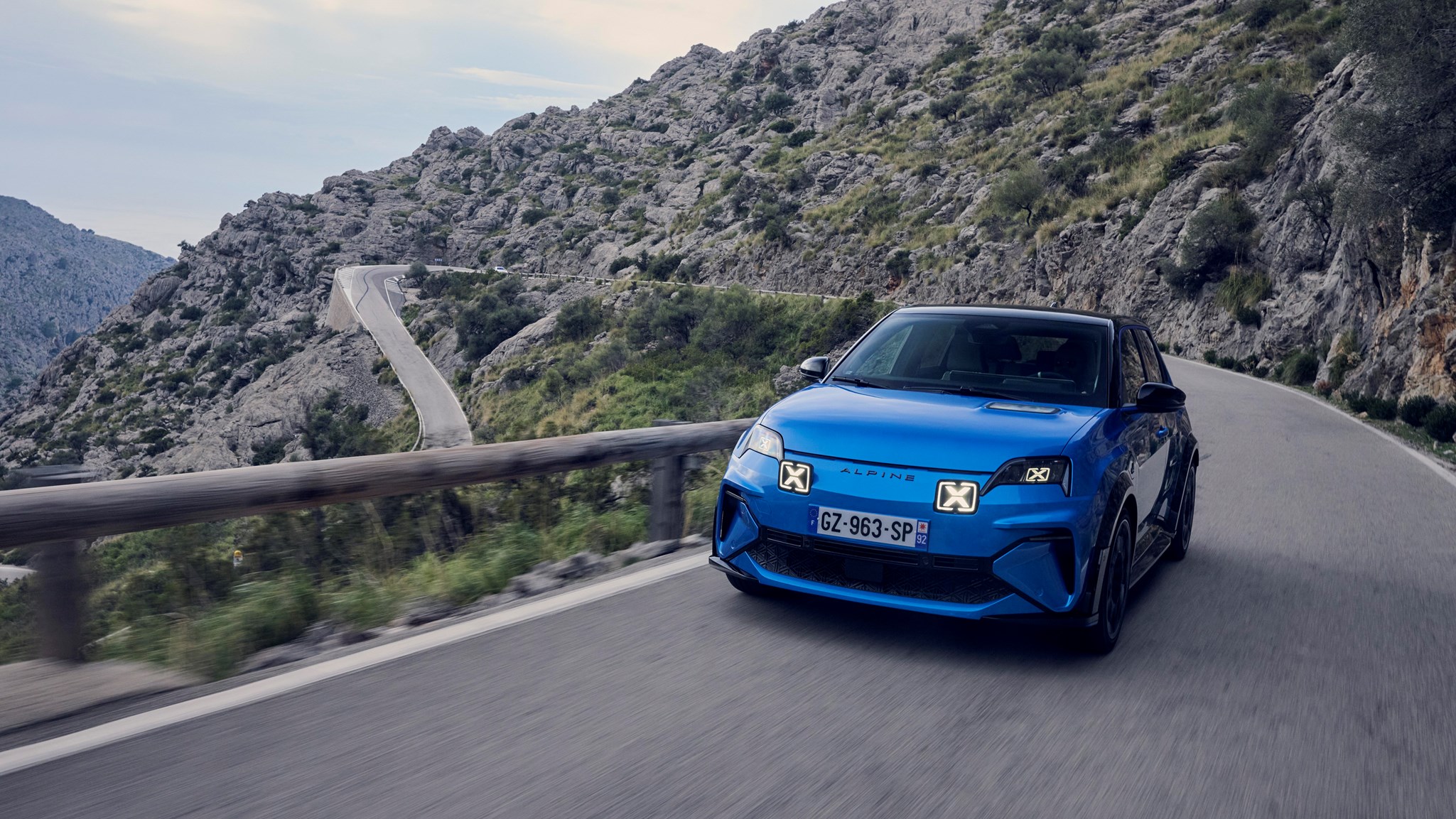
What’s new?
As mentioned, the A290 is based on the Renault 5 and it’s not hard to see the similarities in the basic shape of the car. However, Alpine’s design department has gone to town on the exterior. For starters, that squat, muscular stance has been enhanced partly because the car itself has a 60mm wider track than the 5 but also thanks to flared wheelarches and side skirts.
An air damn on the bonnet, chunky rear diffuser and eye-catching spoiler add further presence, while the French flag on the C-pillar, ‘Alpine Swoosh’ cutout on the rear three-quarter and X motifs on the front lights are all exceptional details.
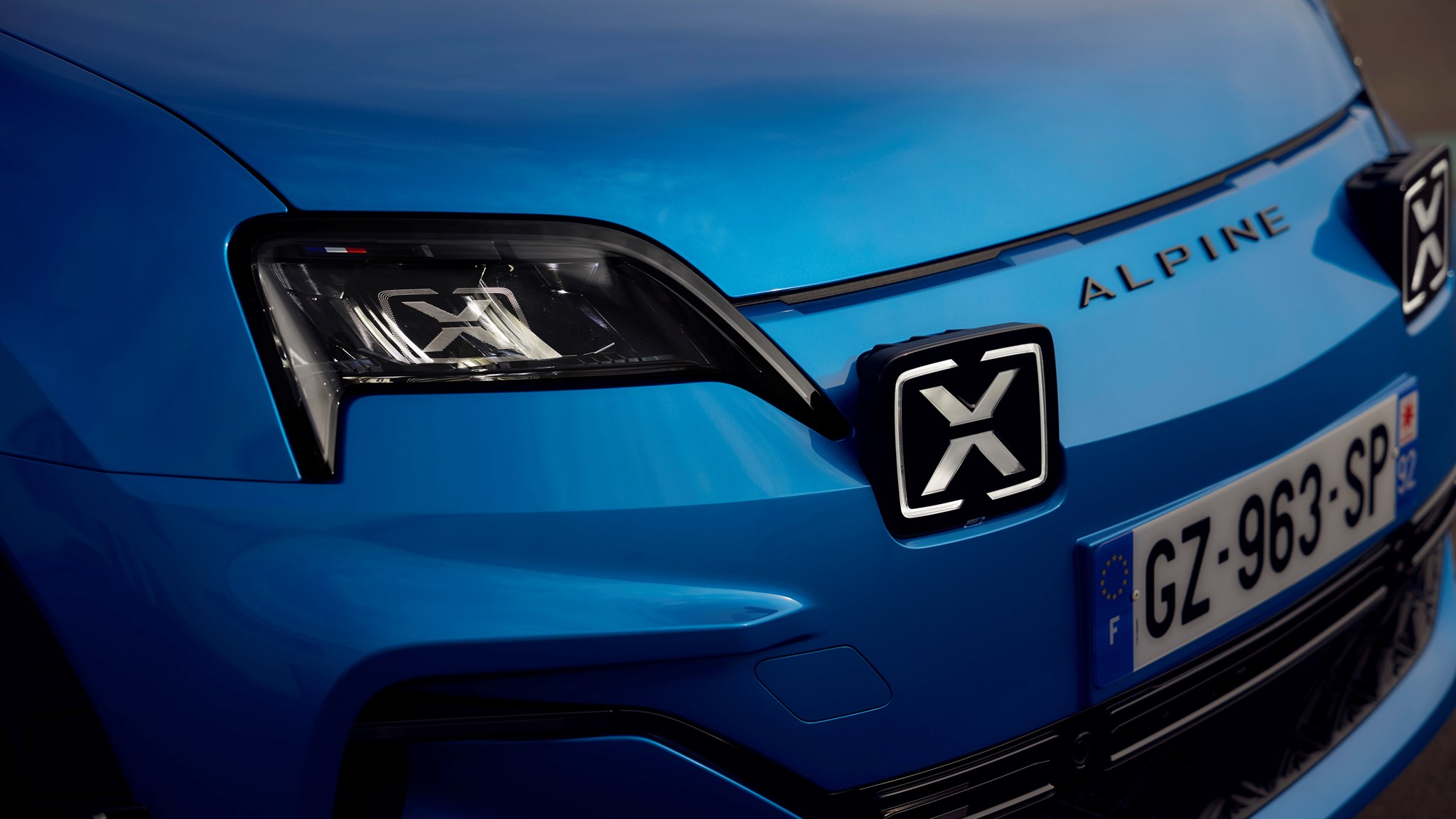
19-inch wheels with a design referencing the A310 house 4-pot, 320mm front brakes, while the four available body colours – Deep Black, Nival White, Matte Tornado Grey and Alpine Vision Blue – complete the look.
What are the specs?
The A290 will be available in four trim levels – GT, GT Premium, GTS and limited-run Premiere Edition. GT and GT Premium get 178bhp and 210lb ft of torque, while GTS and Premiere Edition deliver 217bhp and 221lb ft, both through a single motor on the front axle.
All models get a 52kWh battery with a 226- or 236-mile range and 100kW DC charging capability, giving a 15-80% charge in 30 minutes. Heat-pump and bidirectional V2L (vehicle-to-load) and V2G (vehicle-to-grid) functions are standard.
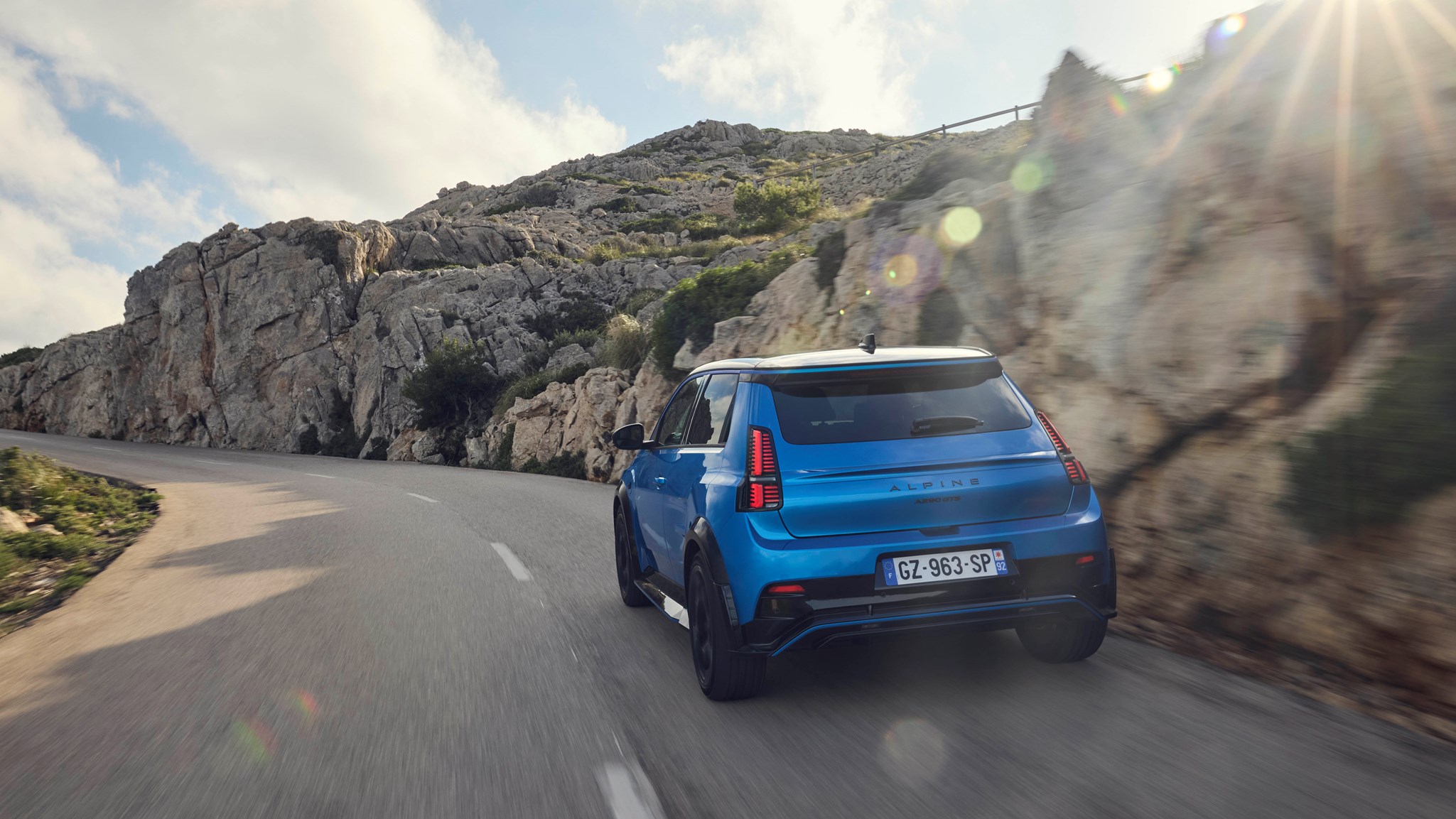
As for equipment, the GT includes Iconique 19-inch wheels, heated sports seats, wireless smartphone charging and more, while GT Premium improves on this with a focus on comfort and refinement (Nappa leather upholstery, heated steering wheel and a Devialet premium audio system all feature). Top of the range GTS, meanwhile, gets Snowflake alloy wheels and further touches.
How does it drive?
The first thing that stands out about the A290’s driving experience is that, by the warped standards of EV performance cars (and EVs in general for that matter), it’s not that quick. 0-62mph takes 6.4 seconds in the 217bhp model, rising to 7.4 seconds in the lower-powered car.
Granted, it won’t be taking part in any drag race ‘giant killings’ with numbers like that, but it’s very much in the performance bracket of recent petrol hot hatches like the Fiesta ST and i20N. This means that you can keep your foot pinned for a good five seconds or so and find you still have headroom to the national speed limit.
However, without the neck-snapping speed to distract you, there’s not an awful lot going on in a straight line. You flex the accelerator pedal, there’s a very slight delay and the car surges forward to the tune of one of two switchable sound profiles – or near silence, if you prefer. There’s no modest but characterful powertrain to thrash and no sense of having to work for the speed you’ve gained. As an emotional experience, it’s lacking.
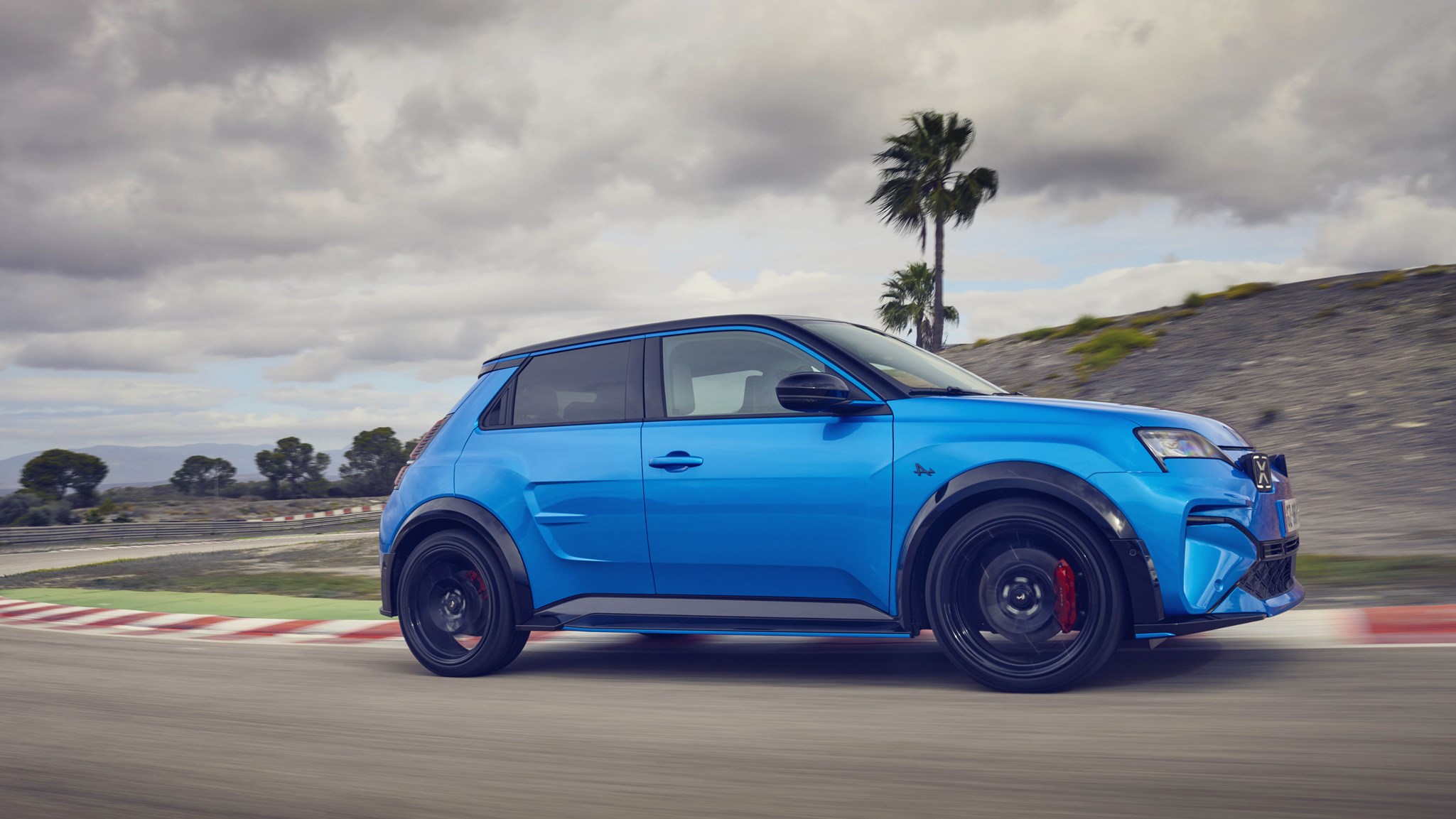
Thankfully, there’s still joy to be had in the corners. Alpine’s engineers reckon they’ve nailed the 57:43 weight distribution and as we flick the A290 into an empty, greasy roundabout off-throttle, the rear end duly obliges and arcs round in an easy-to-control burst of rotation.
That the A290 can throw these shapes in a way that a Abarth 500e – for example – feels reluctant to, is perhaps down to a very clear longitudinal transfer of weight. Accelerate hard at any speed south of 80mph and the front end lifts and the rear squats noticeably. Not ideal for getting the power down on corner exit (especially with no proper limited-slip diff – it’s torque vectoring by braking), but great for shifting weight off the rear into a corner.
We’d like a bit more heft in the steering, but there’s a nice sense of positivity across the first few degrees that breeds confidence and allows you to place the A290 with precision. On our smooth Spanish test routes there was little to suggest how the chassis would handle the more unfinished state of British roads, yet every time we did find the odd bump or expansion joint it was dispatched with ease. Refinement, too, was excellent.
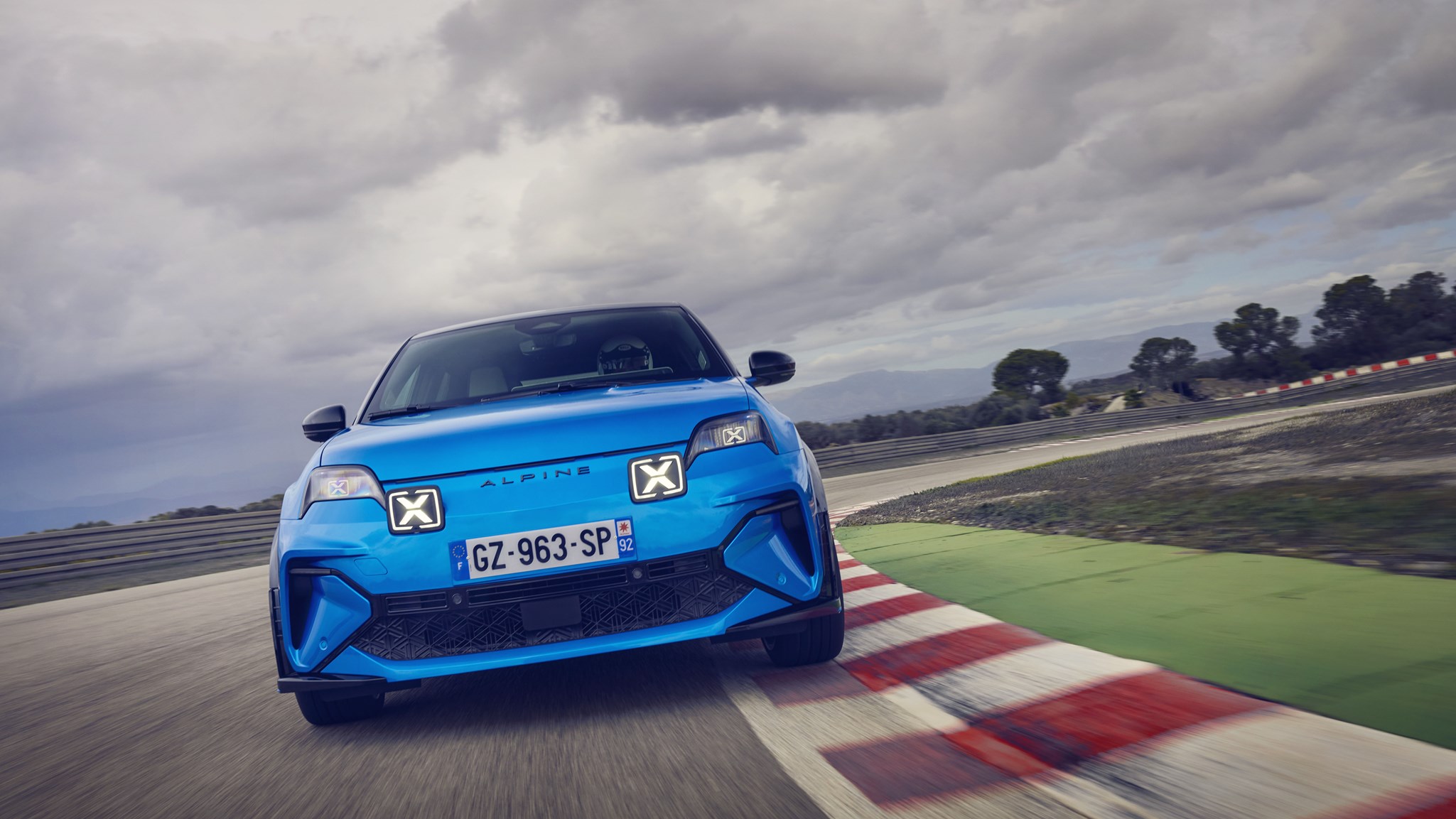
Our time on track with the A290 was brief but fun. The near 1.5-tonne kerb weight is, of course, far more evident with extra space and speed to take advantage of and mid-corner understeer is available on tap if you’re not careful. Crucially, though, it’s chuckable, adjustable and approachable enough to allow you to drive like a hooligan and not pay a huge price if you overstep the mark.
The brake pedal is also worth a mention. Alpine’s engineers were keen to highlight the work they’ve done on the brake-by-wire system and it’s hard to fault the end product. A solid enough pedal with decent feel and consistency – not to mention stopping power – it’s an impressive effort on what can be a weak point for EVs.
Meanwhile, several hours of driving on a variety of roads suggested that a real-world range of over 200 miles would be highly achievable on the GTS model. Indeed, the lower-powered specs may in theory deliver a few more miles, but not enough to warrant their choice on the basis of additional range.
What’s the interior like?
There’s the odd old Renault switch here and there, but the overall feeling is that the A290 feels like an expensive place to sit. The driving position is well-judged and – in top-spec GTS there’s Napa leather (sustainable, natch) aplenty – plus physical climate control dials (bravo, Alpine) and a responsive and easy to navigate touchscreen.
You’ve also got a straightforward to – ahem – adjust suite of driving assistance aids (two button clicks and lane-keep assist is off) and a centre console inspired by the A110 with buttons for drive, neutral and reverse. In short, it feels a cut above your average fast hatchback and – comparatively speaking – worthy of the price tag.
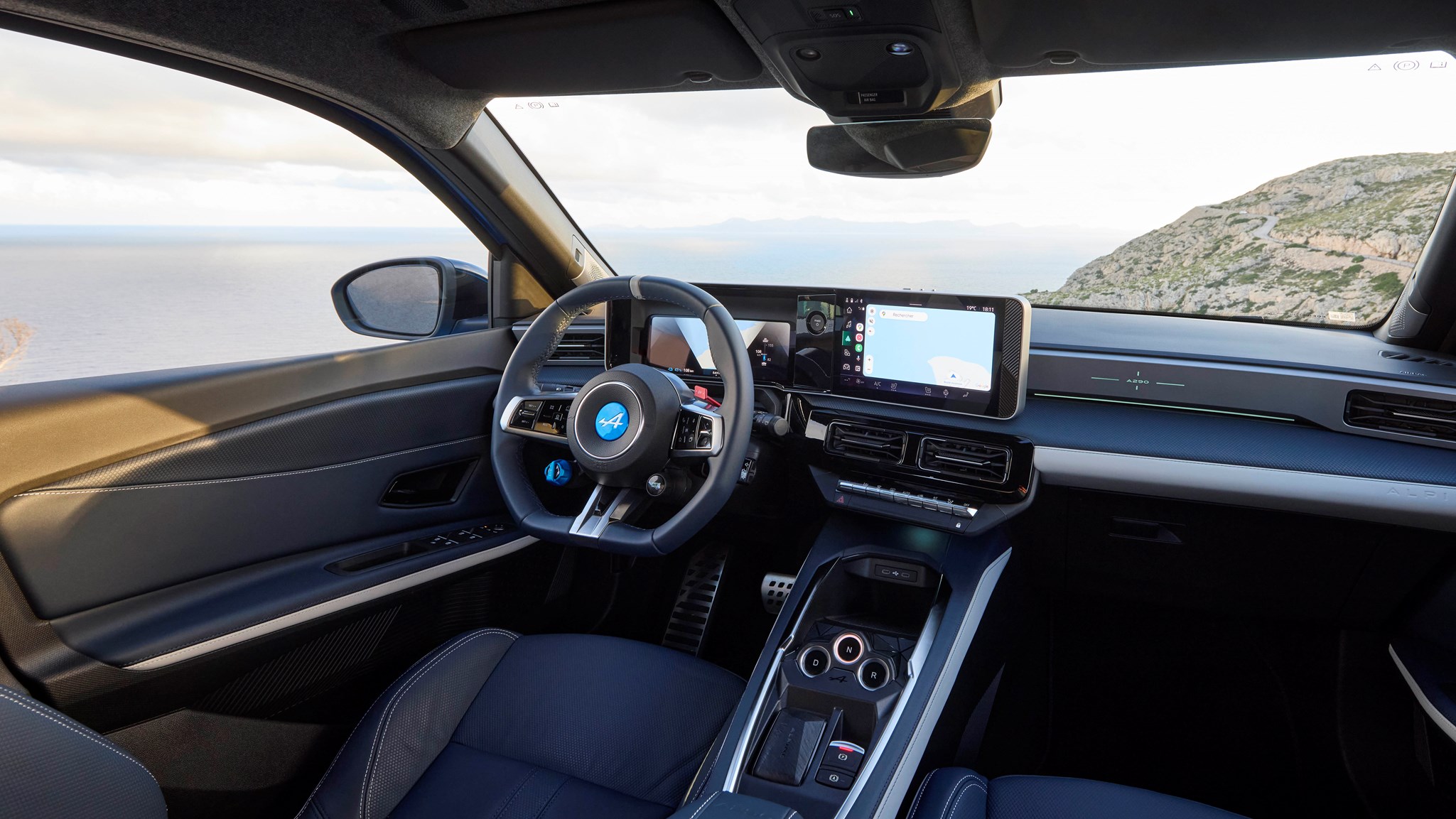
However, it’s not perfect. Alpine’s designers seem to have decided that cupholders are an unnecessary extravagance (they’re included on a Lamborghini Revuelto for goodness sake) and the F1-inspired steering wheel switches could have been better executed. The drive mode dial, for example, is not a dial but merely a button and the big red overtake paddle is rendered pointless given the same level of performance can be accessed by pushing the accelerator beyond its kickdown point. Hmmmm…
It must be said, though, that other features that could be written off as gimmicks are more successful. In addition to live vehicle data (G forces, brake temps, throttle position), Alpine Telemetrics provides coaching and challenges. The former gives tips on how to achieve things like lift-off oversteer, while the latter provides goals to achieve (0-62mph time, max G etc) and gives you a bronze, silver or gold medal depending on your score. It won’t be for everyone, but the element of fun is harmless and nicely presented.
Before you buy
We suspect Alpine has one eye on the headline entry-level price with the GT (expected to be around £33,500) and GT Premium models. The kit they offer is perfectly acceptable, but we suspect that 180hp will feel underwhelming in a 1.5-tonne performance car. The 40hp and circa £1,500 increase from GT Premium to GTS seems like a fair trade-off.
Verdict: Alpine A290
In many ways the A290 is job done for Alpine. As a performance car, it’s superior to the Abarth 500e and MINI Cooper Electric and provides a neat step up for those that the looks and feel of a Renault 5 but with added motorsport credentials. Alpine’s done well to hide the 1.5-tonne kerb weight and the performance levels are cleverly judged, stopping short of falling into the trap of unnecessary levels of easy power. The levels of adjustability (and genuine fun) in the handling also needs to be commended, as does the car’s ability to team this with excellent everyday driving manners.
However, while comparing the A290 to a small, front-wheel drive petrol performance car might seem unfair, for fans of the hot-hatchback genre it will be the obvious benchmark. And it’s here that we arrive at a dilemma. There’s clearly not the same level of enjoyment to be had from the powertrain and this is a problem that’s anything but unique to Alpine, but on a type of car that traditionally rewarded you for working its modest powertrain to 11/10ths it feels as though there’s something missing from the recipe.
Specs are for GTS model, pricing is approximate.